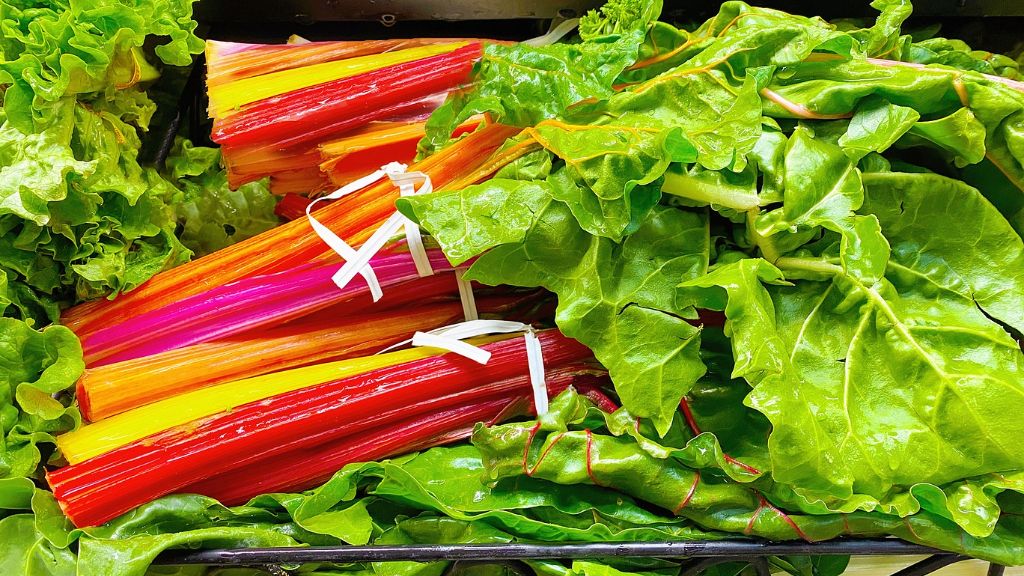Growing Five-Color Silverbeet, Rainbow Chard

You know the saying "everything old is new again." Well, this is true with vegetables as well. I'm sure you have noticed it, especially if you haunt the local farmer's market, but even the grocer has started stocking produce that may be less familiar to us - though it may actually been around for ages and just fallen from popularity. One example of this is chard, specifically Rainbow chard plants (Beta vulgaris var. Cicla).
Rainbow Chard History
Ok, people, chard is nothing new nor is it a chichi boutique veggie of the moment. Rainbow Swiss chard cultivation dates back to 1636, although it wasn't mentioned commercially until its inclusion in the Vilmorin Seed Catalog in 1888. It has been popular in Europe since the 1670's and eaten routinely by the common man, or woman. Chard is really a beet (yes, I said beet) that has been fostered for its leaves at the expense of root formation. All chard varieties are descendants of the sea beet, which grows along the Mediterranean and Atlantic coasts. The nutrition provided to the working masses is undeniable. Rainbow Swiss chard contains high levels of the vitamins C, K, E, beta-carotene as well as manganese and zinc. Today, Rainbow chard plants are cultivated not only for their use nutritionally, but as ornamental additions to the garden. Rainbow chard heirlooms are an old cultivar dating back to the 1850's, and until recently, very nearly lost. The stalks come in a plethora of hues from red, yellow, orange, pink to cream topped with wrinkled green to dark maroon leaves with contrasting red veins. A double whammy for the gardener, beautiful and good for you! Oh, and if you are looking for Rainbow Swiss chard, you might find it under another name and not even know it. This heirloom plant is also known as "Bright Lights" and "Five-Color Silverbeet."
Growing Five-Color Silverbeet
All chard plants thrive in cool summer temperatures, and growing Five-Color Silverbeet is no exception. That said, the plant is fairly adaptable and is tolerant of heat and humidity. Sow seeds outside at depth of ½ inch in groupings of 2-3 seeds every 6-8 inches. Seedlings will emerge in 5-10 days and you can start picking the leaves when very young, 2-3 inches, for use in salads. Wait until the plant is 10 inches tall if you aim to sauté the leaves though. We pick the outer leaves and let more grow from the interior, but you can also harvest the entire plant 2 inches above ground and let it regrow. This baby is so accommodating and gives such bang for the buck, with a lengthy harvest. If you live in USDA zone 6 or warmer, you may also sow in the late summer for an additional fall/winter crop. Keep in mind that not only will you love Rainbow Swiss chard, but every other creature that can get at it will too. You may want to protect it from rabbits, deer and birds - or don't sweat the small stuff and plant enough for your animal friends to enjoy as well.
Gardening tips, videos, info and more delivered right to your inbox!
Sign up for the Gardening Know How newsletter today and receive a free copy of our e-book "How to Grow Delicious Tomatoes".

Amy Grant has been gardening for 30 years and writing for 15. A professional chef and caterer, Amy's area of expertise is culinary gardening.
-
 Best Tomatoes For Containers: 10 Tastiest Varieties For Plentiful Produce In Compact Areas
Best Tomatoes For Containers: 10 Tastiest Varieties For Plentiful Produce In Compact AreasThese are the best tomatoes for containers that prove you don't need to have a large space or elaborate garden to grow delicious produce.
By Bonnie L. Grant
-
 Ultimate Potted Flowers For Spring: 8 Brilliant Blooming Options for Spring Containers
Ultimate Potted Flowers For Spring: 8 Brilliant Blooming Options for Spring ContainersCelebrate the most uplifting of seasons with the most dazzling container flowers imaginable. Here, we present some of the loveliest potted flowers for spring…
By Tonya Barnett
